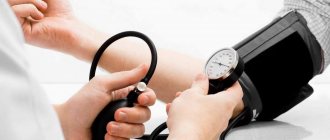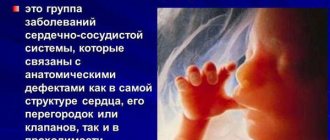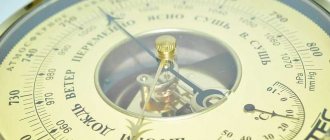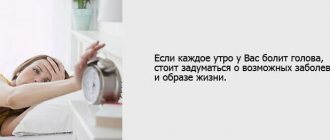What is intracranial pressure
The brain has a complex structure. Inside there is a system of ventricles, which are interconnected and filled with cerebrospinal fluid. It is located in the subdural space between the two membranes of the brain - the outer, hard, and arachnoid. This entire structure carries out:
- protection of a vital organ from shocks and injuries;
- provides nutrition;
- maintains fluid balance in nerve endings.
ICP is an indicator of the level of cerebrospinal fluid and its pressure on brain structures. Elevated values are symptoms of the development of pathology in the body, the presence of a disease that has caused changes in intracranial pressure. It is important to notice violations in time, diagnose and prescribe treatment. This is especially true for the appearance of persistent signs of pathology in a child. In ordinary life, a short-term increase in ICP is possible, which is safe. It can be called:
- cough;
- baby sucking at the breast;
- act of defecation;
- lifting weights as a teenager;
- nervous tension.
How to measure intracranial pressure
ICP syndrome is often observed in infancy. How to check intracranial pressure in a child? The most informative method is a spinal puncture, but the method is used in special cases when the baby’s skull bones are not overgrown, in a clinical setting. Parents can indirectly determine the presence of pathology. Since one of the symptoms is an increase in the size of the head, it is necessary:
- take a measuring tape;
- measure the circumference of the head above the eyebrows and along the most protruding part at the back of the head;
- the average at birth is 34 cm, increasing by 1 cm every month.
It is very difficult to objectively measure intracranial pressure, so there are other techniques that help diagnose a child. The following are carried out in turn:
- detailed examination by a neurologist - changes in the size of the skull, developmental deviation are noted, information about symptoms is collected;
- neurosonography - ultrasound examination of the brain - used for infants - the presence of pathologies is detected;
- study of the fundus – vascular abnormalities and changes in the optic nerve head are recorded.
To clarify the diagnosis, hardware diagnostics are prescribed to more accurately determine the symptoms of intracranial pressure in the child. Methods used:
- Dopplerography – studies cerebral circulation, reveals the condition of blood vessels;
- MTP – examines tissues and liquor spaces;
- encephalography – determines the situation with blood vessels based on pulse rate;
- Computed tomography examines changes in the structure of the brain using X-rays.
Normal intracranial pressure
It is very difficult to accurately measure increased intracranial pressure. Many factors influence the values of indicators in children. This could be high or low room temperature, poor sleep. Often, elevated ICP values can appear in a baby when he is upset for some reason. Even the position in which the measurement is taken has an effect - it should be performed correctly while lying down. A spinal cord puncture is performed to indirectly determine the compression of the cerebrospinal fluid. The normal intracranial pressure is in mmHg:
- for newborns – 1.6-6;
- in children – 3-7.
Treatment with folk remedies
In addition to drug therapy or as independent treatment, you can use time-tested folk remedies. Here are some effective recipes:
- Lavender decoction - 1 tbsp. l. dried herb, pour 2 cups of boiling water, let it brew for an hour, strain and give the child 1 tbsp. l. 1 time per day before meals. Course of treatment: 30 days.
- Compresses with camphor oil - medical alcohol is mixed with camphor oil (1:1). A cotton swab is moistened with the resulting mixture and lubricated with gentle gentle movements, the child’s scalp is wrapped in polyethylene and a warm cap is put on top. The procedure is recommended to be done at night for three weeks.
- Birch sap - to normalize increased intracranial pressure, the baby should be given 1-2 glasses of sap per day (depending on age). Therapy is carried out for 4 months. To improve the taste, you can add 1 tsp to birch sap. flower honey.
We recommend: Reactive arthritis in children
If a child experiences an allergic reaction to any product (skin rash, itching, etc.), treatment should be stopped and a doctor should be consulted.
What causes intracranial pressure
When increased intracranial pressure is diagnosed in a child, the symptoms indicate the presence of a disease that provokes this situation. A common cause is hydrocephalus, in which the outflow and circulation of cerebrospinal fluid is disrupted. ICP can be triggered by:
- brain tumors;
- encephalitis;
- swelling and inflammation of the brain;
- meningitis;
- head injuries;
- early fusion of the bones of the newborn’s skull with increasing brain mass;
- hematomas;
- cerebral hemorrhages.
Intracranial pressure occurs in a child as a consequence of difficult pregnancy and labor. Its increase may depend on:
- toxicosis;
- congenital pathologies;
- placental abruption;
- birth injuries of the cervical vertebrae;
- intrauterine infections;
- genetic pathologies;
- acute fetal hypoxia due to difficult childbirth, umbilical cord entanglement;
- cerebral edema for this reason.
Symptoms of intracranial pressure
What accompanies the appearance of ICP in a child? In pathologies, symptoms of intracranial pressure are observed:
- headache;
- development slowdown;
- drowsiness;
- problems with remembering information;
- inattention;
- bad handwriting;
- dark spots flashing in the eyes;
- whims;
- large forehead;
- vision problems;
- severe vomiting without relief;
- closed eyes;
- poorly developed speech;
- fast fatiguability;
- impaired coordination of movements;
- tearfulness.
Symptoms with low levels
A reduced level of ICP does not manifest itself in any way for a long time; sometimes it is difficult to determine that it is this and not other diseases. Some of the main signs include pain in the heart area, decreased blood pressure, the appearance of seizures and frequent fainting. The patient suffers from severe headaches, especially when sitting or raising his head.
It is impossible to get rid of them with medications. It only helps if the person lies with his head down or squeezes the jugular veins. He becomes irritable, lethargic, gets tired quickly, sleeps poorly, bright flashes appear before his eyes, and his performance decreases.
Signs of intracranial pressure in a child
In childhood, the symptoms of ICP may be similar to other diseases and require careful diagnosis. The cause is not always an excess of cerebrospinal fluid in the brain. Characteristic signs of intracranial pressure in a child:
- restless behavior, especially in the evening and at night;
- sleep problems;
- nausea, regurgitation in infants;
- refusal to eat;
- increased head size;
- Graefe's symptom - lowering of the eyeballs;
- dilation of veins under the scalp;
- developmental delay.
Intracranial pressure in infants
There are several symptoms that should cause parents to sound the alarm. How does intracranial pressure manifest in infants, which is dangerous? It is necessary to urgently contact a neurologist if you have:
- pulsation, swelling of the fontanel, especially at rest;
- periodic twitching;
- uneven muscle tone;
- systematic seizures;
- open eyes during sleep;
- lethargy;
- freezing spells;
- involuntary movements of the pupils;
- loss of consciousness.
Diagnosis of the disease
If any signs of the disease appear in a child under seven years of age, it is necessary to carry out a diagnosis. The only correct and effective way is a spinal puncture. The results of the procedure make it possible to compare and measure pressure levels inside the skull. But this method is used extremely rarely in children, as it is considered invasive. In medicine there are also other diagnostic options. Based on a number of signs, the disease is determined and treatment begins.
When the first signs of illness appear, you should consult a specialist. It is the doctor who, during the examination, determines all deviations in the child’s reflexes. During diagnosis, it is possible to identify a completely different ailment, after which the patient is sent for a consultation with an ophthalmologist.
The most common way to determine this disease in a child under one year old is an ultrasound examination of the fontanel. This method is called neurosonography. During such a study, an increase in the interhemispheric fissure is detected. An increase in the size of the ventricles is also determined. This type of study helps to determine as accurately as possible the deformation and the presence of space-occupying formations in the child’s brain. This study must be carried out in the first year of the baby’s life.
What to do with intracranial pressure
Parents need to know that early detection of symptoms and contacting a doctor provide the opportunity for a complete recovery. The main thing is to follow all instructions. The doctor approaches the treatment process individually and conducts it under his own control. The child will be healthy if the following methods are used in combination:
- normalization of the daily routine;
- walks in the air;
- restriction of physical activity;
- long sleep;
- ordering nutrition;
- swimming lessons.
What is recommended to do for intracranial pressure? The child is prescribed:
- medications - diuretics, neuroprotectors, sedatives and nootropics;
- physiotherapy – magnet, electrophoresis;
- physical therapy;
- acupuncture;
- massage;
- in case of serious problems - surgical intervention - shunting is performed - the excess amount of cerebrospinal fluid is removed from the cranial space into the abdominal cavity.
Forecast
If intracranial hypertension syndrome in children is detected at the initial stage of development, and full-fledged comprehensive treatment begins, the child’s recovery will be complete, and this will not affect his development and life. Modern methods of combating hypertension using traditional and folk medicine help cure very complex cases; it is only important to quickly begin treatment and carry it out comprehensively, in several directions at once.
It is very important in such a situation not to engage in amateur activities, but to be sure to follow the instructions and prescriptions of an experienced doctor.
Consequences of intracranial pressure
If you do not pay attention to the symptoms of the disease in a child and do not treat it, it will cause serious problems. The effects of intracranial pressure will be observed:
- blurred vision;
- breathing problems;
- disorder of consciousness;
- epileptic seizures;
- developmental delay;
- movement coordination disorder;
- decreased muscle tone;
- changes in heart function;
- difficulty in cerebral circulation;
- deterioration of emotional state;
- reflex disorder.
Video on the topic
About the symptoms and dangers of ICP in children in the video:
When you detect increased ICP in young children, there is no need to panic. This disorder can be eliminated if the correct treatment is prescribed. However, parents should not try to cope with this problem on their own. It is very important to pay attention to clinical symptoms, as well as changes in the baby’s mood and behavior.
As a rule, this problem is discovered at home. After this, it is necessary to undergo diagnostic procedures in a medical institution as soon as possible. If the doctor suggests hospitalization, you should not refuse it. After all, home treatment is less effective.
The information on the MyMedNews.ru website is for reference and general information, collected from publicly available sources and cannot serve as a basis for making a decision on the use of medications in the course of treatment.
MyMedNews.ru
And we also have
Just one hour of exercise a week slows brain aging











